How To Fully Winterize Inboard Boat Motors in 1 Hour
Winterizing an inboard motor requires some different steps than winterizing an outboard motor, but the general principles are the same. In this article, we'll show you a step-by-step guide on how to winterize an inboard boat motor quickly and easily and avoid costly repairs in the spring.
One of the most critical steps in winterizing an inboard boat motor is adding a fuel stabilizer. Another important step is changing the oil. Finally, you will need to flush the cooling system to remove any built-up sediment or debris that can cause blockages or damage.
The cost of winterizing an inboard boat motor varies depending on the size of the boat, with larger boats needing more time and materials and smaller boats requiring less effort. Let's take a look at how much is the average cost of winterizing an inboard boat, depending on the boat size.
Summary
- Filling up the fuel and adding a stabilizer helps prevent air and moisture from getting into the fuel system, leading to fuel contamination and starting problems.
- Flushing the cooling system with antifreeze and draining all water from the boat helps prevent water from freezing and causing damage to the engine and other components.
- Changing the oil and oil filter and applying fogging oil helps to protect the engine from rust and corrosion during the winter storage period.
- You can winterize an inboard boat motor by yourself, which only costs around $50 to $100, but you can also have a professional do the job to avoid costly repairs in the spring.

On this page:
Let's Winterize An Inboard Boat Motor In Just 1 Hour
The table below shows how to winterize an inboard boat motor quickly:
| Steps In Winterizing An Inboard Boat Motor | Estimated Time |
|---|---|
| Fill up the fuel tank | 5 minutes |
| Flush the cooling system | 20 minutes |
| Drain the water from the vessel | 20 minutes |
| Change the oil and oil filter | 10 minutes |
| Apply fogging oil | 5 minutes |
| Total Estimated Time | 1 hour |
Fill up the fuel tank
Before winterizing your inboard motor, fill up your fuel tank to prevent air from getting into the fuel system. Air contains moisture, which can lead to condensation in low temperatures.
Condensation can cause fuel contamination and damage the fuel system. You can also add a fuel stabilizer to the tank to prevent the fuel from breaking down and becoming stale, which can cause starting problems and other issues when you're ready to use the boat again.
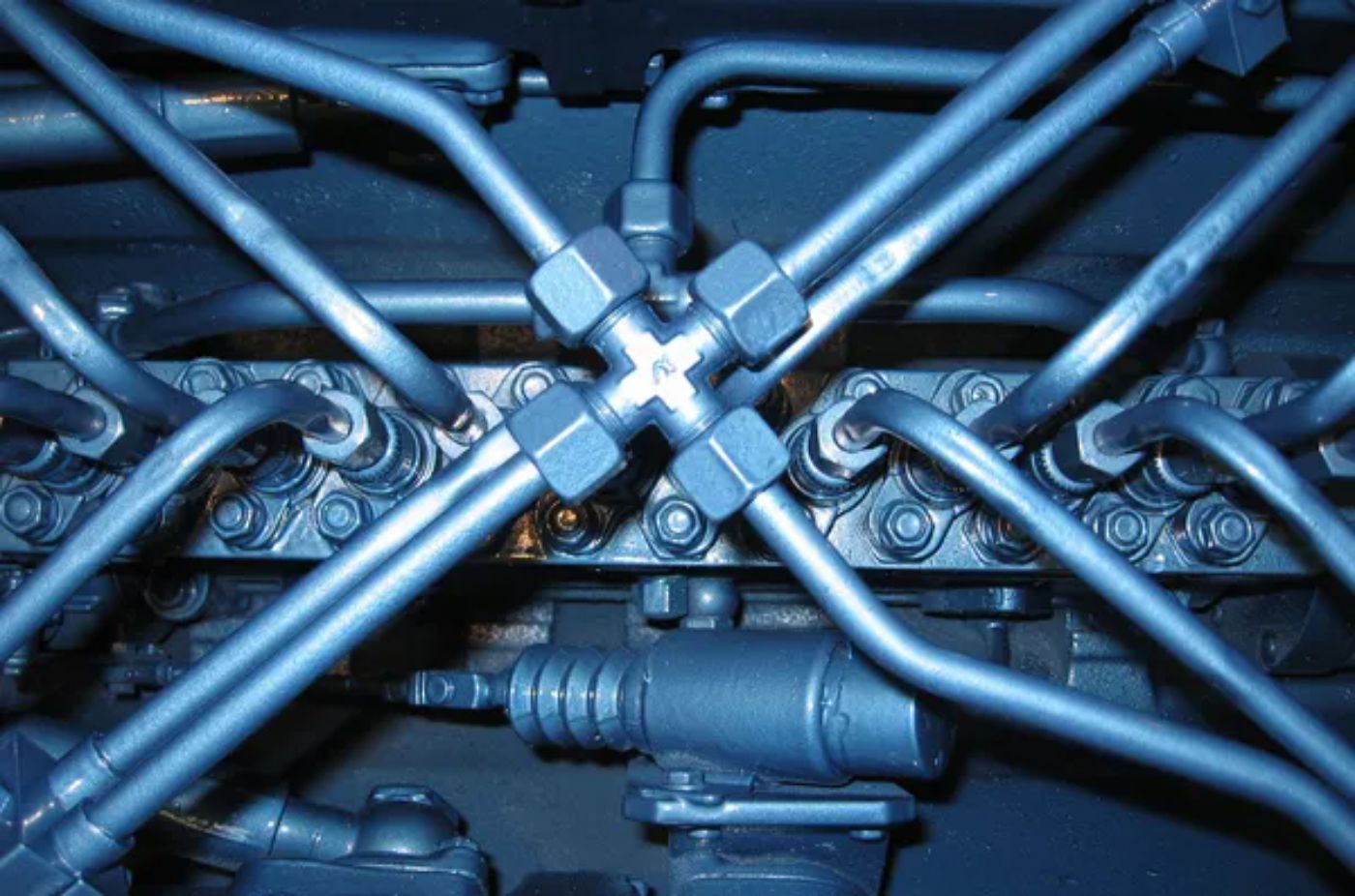
Here are a few other reminders to keep in mind:
- When filling up your fuel tank, make sure to use a fuel that is appropriate for your engine.
- Check the owner's manual or consult with a professional to determine the correct type of fuel to use.
- Avoid overfilling the tank. Leave some space at the top of the tank to allow for fuel expansion during temperature changes.
- Secure the fuel cap tightly to prevent any fuel from leaking out or air from getting in. This will help to keep your fuel system clean and prevent any potential safety hazards.
Flush the cooling system
- Use a garden hose to flush the cooling system of your inboard motor.
- Connect one side of the garden hose to a faucet and the other side to the flusher.
- Connect the flusher to the vessel's water intake.
- Turn on the water and start your boat.
- Let the engine run for five minutes to circulate antifreeze.
- Then, turn off the engine and disconnect the garden hose.
Drain the water from the vessel
Draining the water from your boat helps to prevent water from freezing and causing damage to the engine and other components.
To drain the water, you'll need to locate the drain plugs on the engine block, exhaust manifolds, and any other components that contain water. Refer to the owner's manual or consult with a professional to determine the location of these plugs.
Using a wrench, remove the drain plugs and allow the water to drain completely. Make sure that all of the water is removed from the system, as even a small amount of water can freeze and cause damage.
After the water has drained, you can use a wet-dry vacuum to remove any remaining water from the system. This will help to ensure that all of the water has been removed and that the system is completely dry.
Once you've drained the water from the vessel, replace the drain plugs and tighten them securely. This is to prevent leaks or other issues when you're ready to use the boat again.
Change the oil and oil filter
Old oil can contain contaminants that can damage the engine during the winter. To change the oil and the filter, you may use a wrench to remove the oil filter and drain the oil. Then, replace the oil filter and fill the engine with new oil.
It is recommended to check the owner's manual for the specific type of oil and oil filter to use for your inboard motor. Different engines may require different types of oil and filters.

In addition to changing the oil and oil filter, check the oil levels regularly throughout the winter storage period. This will ensure that the engine is properly lubricated and ready to go when it is time to use it again.
Apply fogging oil
Fogging oil is a special oil that you can spray into the engine's air intake to coat the internal components with a protective layer.
Before applying fogging oil, you may need to warm up the engine to ensure that the oil is distributed evenly throughout the engine. Once the engine is warm, turn it off and remove the air cleaner.
Then, start the engine and spray the fogging oil into the air intake while the engine is running. Try to follow the instructions on the fogging oil can for specific application instructions.
After application, you may need to run the engine for a few minutes to ensure that the oil is distributed throughout the engine. This will help protect the engine from rust and corrosion during the winter storage period.
Note that fogging oil should only be used in gasoline engines, and not in diesel engines. If you are unsure about whether or not to use fogging oil in your engine, consult the owner's manual or a professional mechanic for guidance.
When winter is done and you'd need to reverse these steps above, here's how you can de-winterize an inboard boat motor.
Winterizing A Boat With An Inboard Motor
Below are some steps in winterizing a boat with an inboard boat motor:
Prepare the boat for winterization
Proper preparation of your boat will help you avoid any damage to your boat during the winter months. Here are some steps to follow:
Clean the interior and exterior
Before storing your boat for the winter, you should clean the interior and exterior thoroughly. This is to avoid any mold or mildew from growing while your boat is in storage. Use a boat cleaning solution to clean the exterior of your boat and a vacuum to clean the interior.
Check the fiberglass
Inspect the fiberglass on your boat for any cracks or damage. If you find any damage, it is best to repair it before storing your boat for the winter. This will help prevent any further damage from occurring during the winter months.
Prepare for storage
Find a suitable storage location for your boat. Make sure the location is dry and secure. If you are storing your boat outside, cover it with a boat cover to protect it from the elements.
If you want to save on costs, you can make an affordable DIY boat winter cover by following the steps in this article.
Warm the engine
Before you start winterizing your inboard boat motor, warm the engine by running it for a few minutes. This will help remove any water from the engine and make it easier to winterize.
Winterize the engine and fuel system
Below are some steps to take to ensure that your engine and fuel system are properly winterized:
Change the oil and oil filter
Start by changing the oil and oil filter. This will help remove any impurities that may have built up in the engine throughout the boating season.
Add fuel stabilizer
Add the recommended amount of fuel stabilizer to your fuel tank. This prevents phase separation and keeps your fuel from breaking down over the winter months.
Drain the cooling system
Drain all the water from the cooling system to prevent any potential damage from freezing over the winter.
Fog the carburetor
Fogging oil should be used to protect the engine's internal components from corrosion. Start the engine and spray fogging oil into the carburetor until the engine stalls.
Drain the fuel system
To prevent any fuel from leaking into the engine, drain the fuel system by disconnecting the fuel line and running the engine until it stalls.
Check the spark plugs
Inspect the spark plugs and replace them if necessary. This will help ensure that your engine starts easily in the spring.
Check the exhaust system
Check the exhaust system for leaks and corrosion. Make sure the exhaust outlet is clear of any obstructions.
Winterize the fuel tank
Fill up the fuel tank with fresh, high-quality fuel to prevent moisture from building up in the tank. Add fuel stabilizer to the tank and run the engine for a few minutes to ensure that the stabilizer is distributed throughout the fuel system.
Check the fuel filter
Inspect the fuel filter and replace it if necessary to ensure that your engine is running at optimal performance.
Check the cooling system
Check the cooling system for any leaks or damage. Make sure all hoses and connections are secure.
Winterize the cooling system
Below are some steps to follow to winterize your inboard boat motor's cooling system:
-
Start by removing the water intake hose from the through-hull fitting and ensure that all water is drained from the hose. Use a garden hose to flush the raw water intake hose to remove any debris or sediment.
-
Next, remove the drain plugs from the water lift muffler and let all water drain out. Inspect the muffler for any signs of corrosion or damage and replace if necessary.
-
Drain the engine block and manifolds of all water by removing the drain plugs. Use a flushing attachment to flush the engine block and manifolds with fresh water to remove any remaining debris.
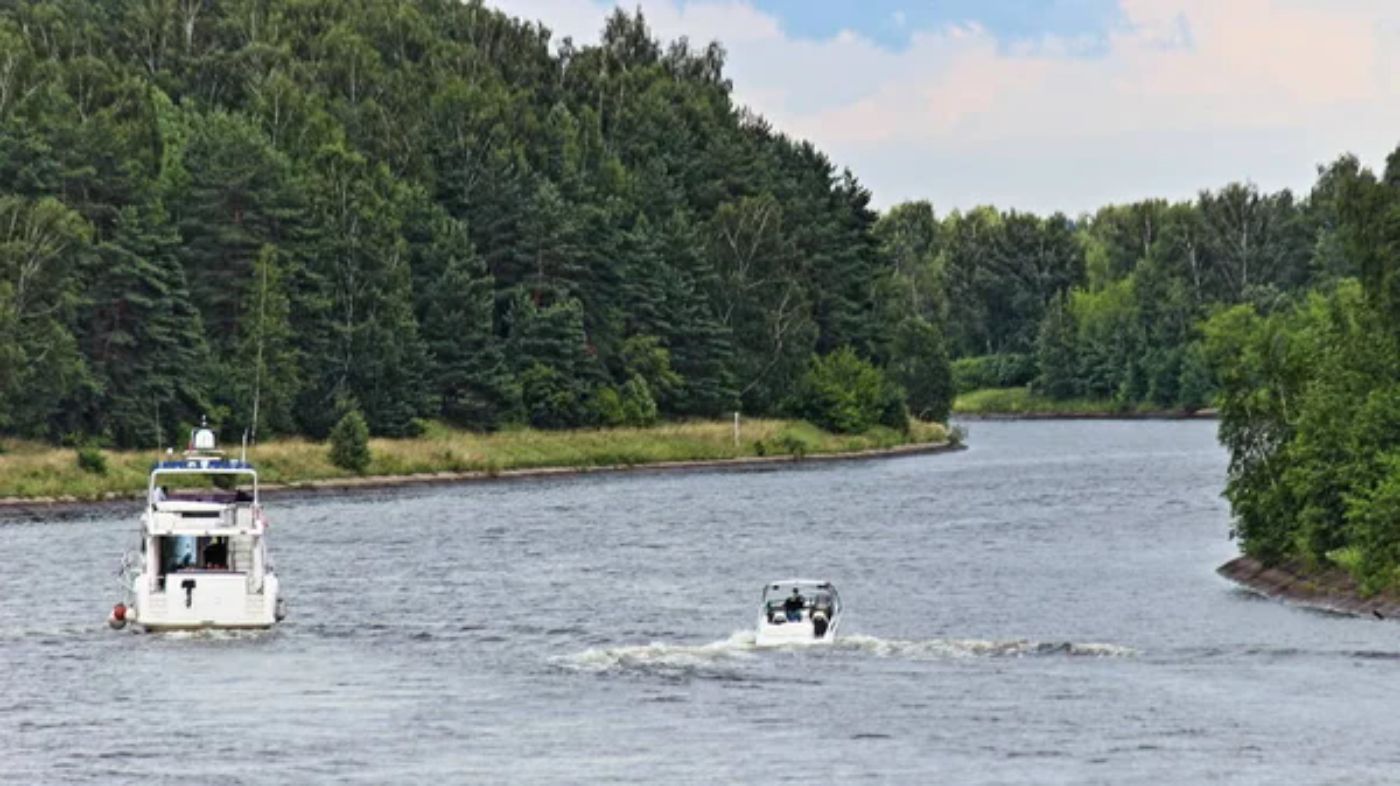
- Once all water has been drained from the cooling system, it's time to add antifreeze. Use a non-toxic antifreeze that is safe for marine engines, such as propylene glycol. Connect a hose to the intake side of the water pump and place the other end in a container of antifreeze.
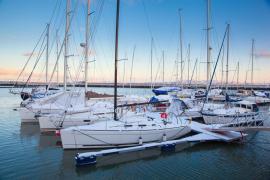
The Difference Between Marine vs. Auto Antifreeze
- Start the engine and let it run until the antifreeze is visible coming out of the exhaust. This ensures that all water has been replaced with antifreeze in the cooling system.
Remember to always use non-toxic antifreeze and to inspect all components of the cooling system for any signs of damage or corrosion.
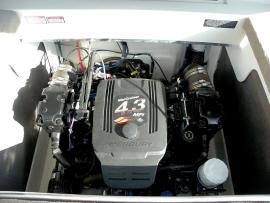
How To Drain Antifreeze and Coolant From Your Boat Engine
Additional winterization steps
In addition to the basic steps of winterizing your inboard boat motor, there are a few extra steps you can take to ensure your boat is fully prepared for the winter season.
Check hoses and hose clamps
Check all the hoses and hose clamps for any leaks or signs of wear and tear. Replace any hoses or clamps that are damaged or rusty to prevent any leaks during the winter season.
Inspect the battery
Make sure your boat's battery is fully charged and clean. If the battery is dirty, clean it with a wire brush and baking soda solution. You can also remove the battery and store it in a dry, warm place to prevent freezing.
Close the seacock
Close the seacock to prevent any water from entering the boat during the winter season. This will also prevent any clogs or gunk from forming in the openings.
Clean the bilge
Clean the bilge thoroughly to remove any dirt or debris that may have accumulated during the boating season. This will prevent any freezing or clogs from forming.
Check the petcocks
Check the petcocks to make sure they are not clogged or rusty. If they are, replace them to prevent any leaks or freezing.
Shrink wrap your boat
Consider shrink-wrapping your boat to protect it from the elements during the winter season. This will also prevent any moisture or freezing from occurring. Boat shrink wraps are also known to last for 6 months to up to 2 years which can make it more reliable.
Cost Of Winterizing An Inboard Boat
The average cost to winterize an inboard boat motor ranges from $515.99 to $589.99. This includes draining the block, flushing and storing with non-toxic antifreeze, fogging cylinders (where applicable), stabilizing fuel, changing gear oil, engine oil, and filter, water separating fuel filter, inspecting hoses/bellows & belts, and disconnecting the battery.
The table below shows the price you can expect to pay for every step of winterizing an inboard boat:
| Winterization Step | Estimated Cost |
|---|---|
| Engine oil change | $50 - $150 |
| Oil filter replacement | $10 - $30 |
| Fuel stabilizer | $10 - $20 |
| Antifreeze | $20 - $50 |
| Water pump impeller | $30 - $100 |
| Lower unit oil change | $30 - $50 |
| Fogging oil | $10 - $20 |
| Battery maintenance | $10 - $30 |
| Labor (per hour) | $75 - $150 |
| Total estimated cost | $255 - $650 |
Now, depending on the size of your boat and the location of your boat, the cost of winterizing may vary:
| Boat Size | Estimated Price for Winterization |
|---|---|
| 20-25 feet | $300 - $500 |
| 25-30 feet | $500 - $800 |
| 30-35 feet | $800 - $1,200 |
| 35-40 feet | $1,200 - $1,800 |
| 40+ feet | $1,800 - $3,000+ |
If you have a larger boat with a more complex engine system, it may require more time and materials to properly winterize. This could result in a higher cost for the winterization process.
On the other hand, a smaller boat with a simpler engine may require less time and materials, resulting in a lower cost for winterization.
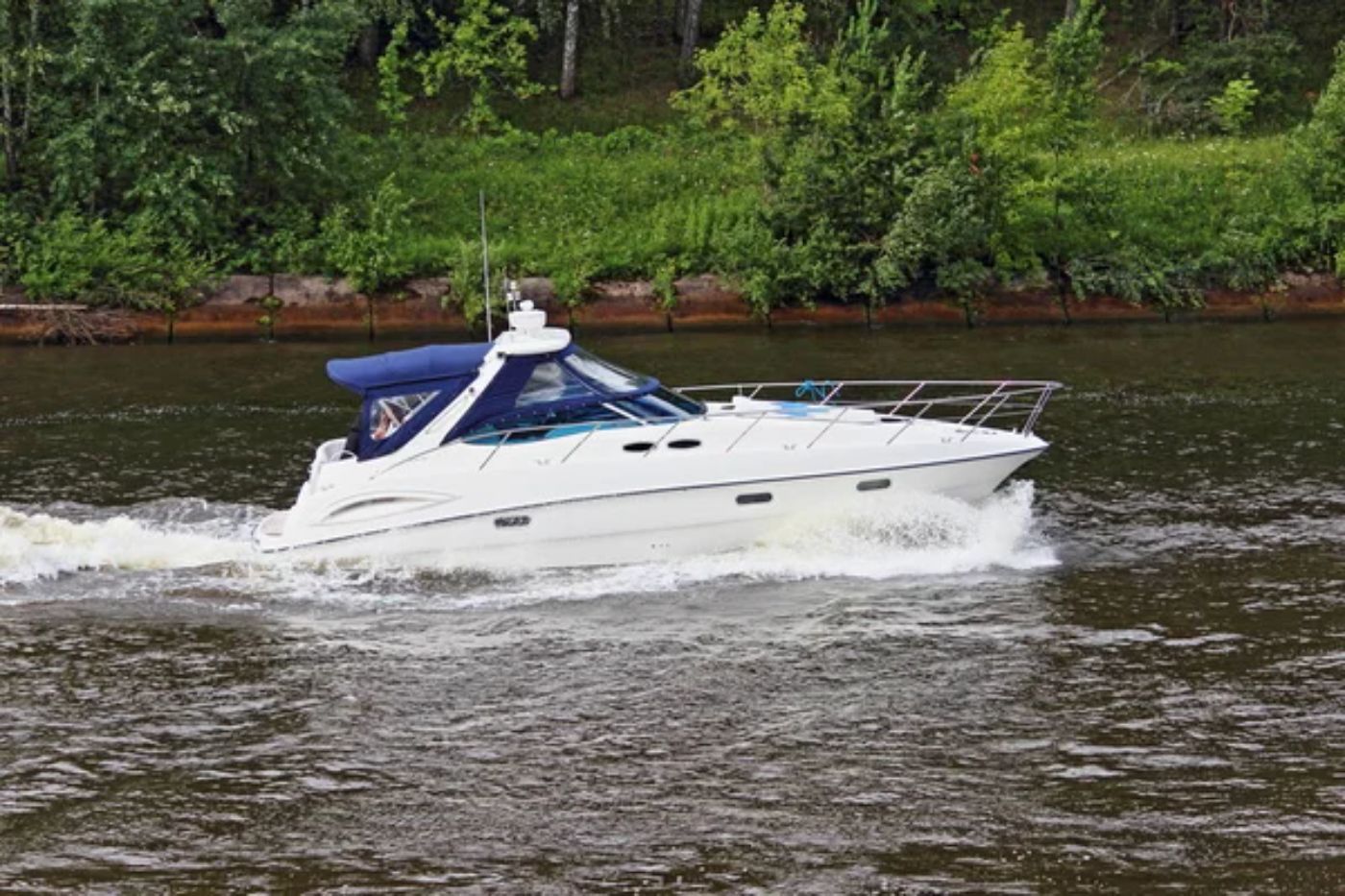
Additionally, if you live in a colder climate where winter temperatures regularly drop below freezing, the winterization process may be more extensive and require additional steps to fully protect the engine and other components. This could result in a higher cost for winterization compared to a location where winter temperatures are milder
If you decide to winterize your inboard boat motor yourself, the cost can be as low as $50 to $100. However, note that if you do not winterize your inboard boat motor properly, it can lead to costly repairs in the spring.
It is recommended to have a professional winterize your inboard boat motor if you are not familiar with the process. This will ensure that your boat is properly winterized and ready to go in the spring.
Did you find the answer to your specific question?
👍 0 👎 0

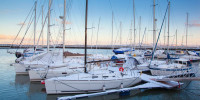
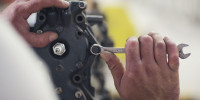
Leave a comment